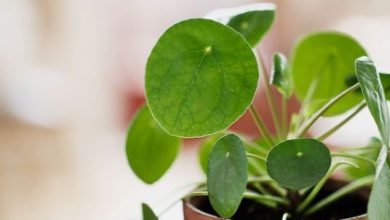Bryonia cretica ssp.

Bryonia cretica ssp. dioica (formerly Bryonia dioica) is also known as Devil’s Turnip . It belongs to the Cucurbitaceae family, being native to southern and western Europe.

You may also be interested in: Hydrocharis morsus ranae, small-flowered aquatic plant
Bryonia comes from the Greek «Bryo-bryein» which means to grow or develop, which refers to the abundance of shoots that the plant develops.
While from Crética it is derived from the Latin “Créticus” which refers to the Cretan origin of the plant.
Characteristics of the Bryonia cretica ssp. dioecious
Annual herbaceous plant that can grow to 2 m tall. Quadrangular stem with hairs.
The leaves are petiolate, palmately lobed, auriculate at the base in appearance to vine leaves, dark green on the upper side and whitish on the underside due to the hairs.
The tendrils are simple, green in color that can measure up to 15 cm. Thanks to this, the plant is attached to the support.
The flowers are female and male. The masculine ones are arranged in clusters while the feminine ones in corymbs.
It has 5 white welded petals with lilac lines and a green background. The feminine ones with a central style and the masculine ones with 5 stamens.
The fruit is spherical, green in color that later turns reddish when ripe.
The seeds are brown, pruinous and granulated.
Bryonia cretica ssp. dioecious

It is a specimen that occurs in forest clearings, ruderal areas and sparse bushes with some humidity.
In gardening it is not used, unless it is a native green space with certain specimens.
It needs to be in full sun or semi-shade exposure.
As for the soil, it develops in those that are deep and fresh.
Irrigation should be moderate with a constant humidity level. Although it does not tolerate puddles, so it must be well drained.
It is a species that is resistant to pest attack, but can be affected by fungi.
It is propagated by means of seeds in late winter, or by division in early spring.
It is a toxic plant, especially its berries. For this reason it has pharmacological applications and its use is dangerous.
Images courtesy of: Miguel Angel Masegosa… , Miguel Angel M….


![Photo of Moisture mealybugs (Porcellio scaber): [Characteristics, Detection, Effects and Treatment]](https://www.complete-gardening.com/wp-content/uploads/2021/06/Que-son-las-cochinillas-de-la-humedad-390x220.jpg)
![Photo of Gloxinia: [Characteristics, Cultivation, Care and Disadvantages]](https://www.complete-gardening.com/wp-content/uploads/2022/08/gloxinia-characteristics-cultivation-care-and-disadvantages-390x220.jpg)
